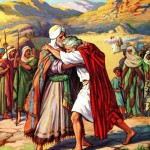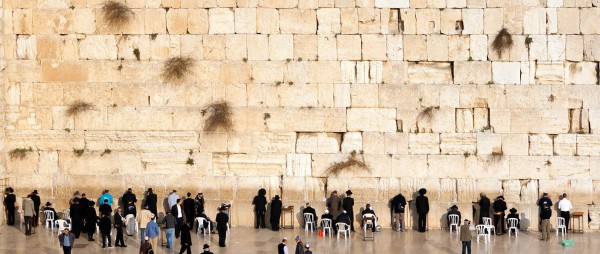
Worshipers pray at the Western (Wailing) Wall, a remnant of the Temple Mount where the First and Second Temples once stood.
“Let them construct a sanctuary for Me, that I may dwell among them.” (Exodus 25:8)
Can you imagine the awesome glory of God filling your home?
That’s what happened when the Jewish people built a home for God during their wilderness wanderings.
The Bible calls this home the Tabernacle or Mishkan — מִשְׁכַּן, in Hebrew.
This word comes from the root, to dwell (shachan — שָׁכַן), which also forms the non-Biblical word Shechinah — שֱׁכִנָה, meaning the Presence or Glory of God on earth.
From the very beginning to the very end of the Bible, we can see the heart of God: He is the Creator who loves relationship and wants to live in the midst of His beloved people forever.
Let’s look at the various parts of the Tabernacle and how they paint a picture of the heavenly reality found in the Jewish Messiah, who brings us into an eternal relationship with God.
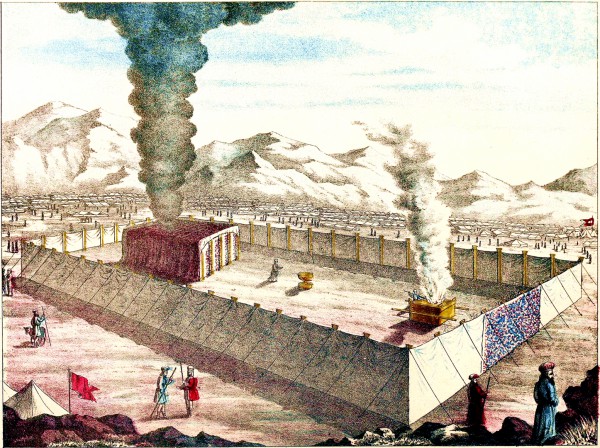
According to Exodus 26, the 810-square-foot Tabernacle was created exactly as God instructed (Exodus 25:9; Hebrews 8:5).
Why Did God Need a House?
In the Garden of Eden, God walked in the cool of the day with His creation.
Since everything God made was already sanctified and holy, there was no need for Him to live apart from Adam and Eve, or for any sacrifice. He enjoyed perfect fellowship with them.
But everything changed with the first instance of disobedience.
Not only did God banish Adam and Eve from the Garden, He later destroyed almost everyone in the flood because of their sin.
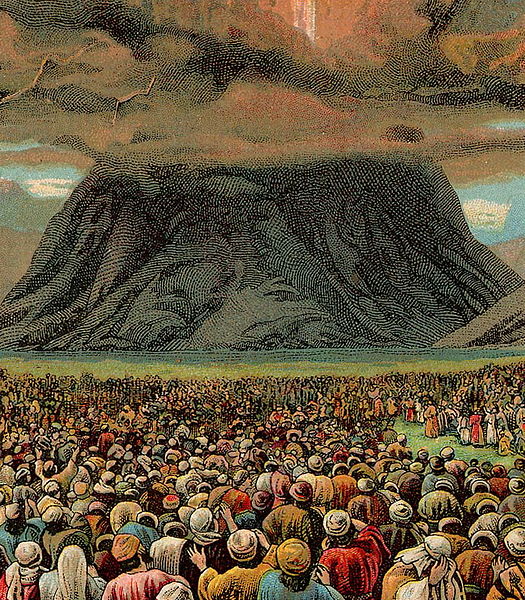
The Children of Israel meet with God at the foot of Mount Sinai, (1907 Bible card)
But He didn’t leave the world in a hopeless state of despair. He created a Chosen People through Abraham to be a nation of kings and priests. He told the Israelites:
“Now if you obey Me fully and keep My covenant, then out of all nations you will be My treasured possession. Although the whole earth is Mine, you will be for Me a kingdom of priests and a holy nation.” (Exodus 19:5–6)
God gave this people a system to restore the broken relationship that sin causes and enter His Presence.
The Tabernacle (Mishkan — מִשְׁכַּן) and its courtyard represented that system.
As it did in the Garden, the Tabernacle had only one entrance, the east gate (Genesis 3:24).
After God exiled Adam and Eve out of the Garden, He set cherubim at the gate to guard it from anyone entering it.
The Tabernacle courtyard, however, was open to any Israelite who wanted to begin the restoration process for himself or anyone in his household who sinned.
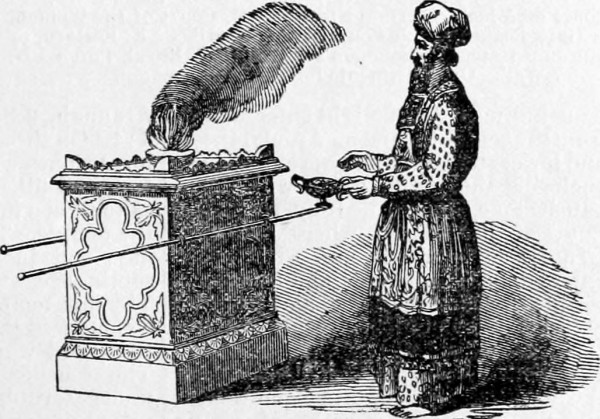
Priest at the Altar of Burnt Offering, which was made of wood and overlaid with brass.
STEP 1: The Altar of Burnt Offering (Brazen Altar)
The first step in the restoration process for an Israelite was to voluntarily walk through the east gate of the Tabernacle courtyard with an unblemished sheep, goat, or bull from his own herd.
At the altar of burnt offering (mizbah olah), he laid his hand on its head, confessing his sin, or the sin of his household.
As he sacrificed the animal, he personally and physically experienced the cost of that sin (Leviticus 1:4–5). God explained:
“For the life of a creature is in the blood, and I have given it to you to make atonement for yourselves on the altar; it is the blood that makes atonement for one’s life.” (Leviticus 17:11)
To finalize God’s forgiveness or covering for that sin — the Israelite’s atonement — the sons of Aaron (the priests) took the blood of the sacrifice and sprinkled it around the altar.
This requirement to personally sacrifice an animal for sin had to be done continuously, and it was only a temporary solution to the problem of sin.
Yeshua (Jesus) became the final solution when He bore our sins in His body on the execution stake as the Prophet Isaiah helps us understand:
“It was the Lord’s will to crush Him and cause Him to suffer, and though the Lord makes His life an offering for sin. For He bore the sin of many, and made intercession for the transgressors.” (Isaiah 53:10, 12)
Yeshua became our final sacrifice!
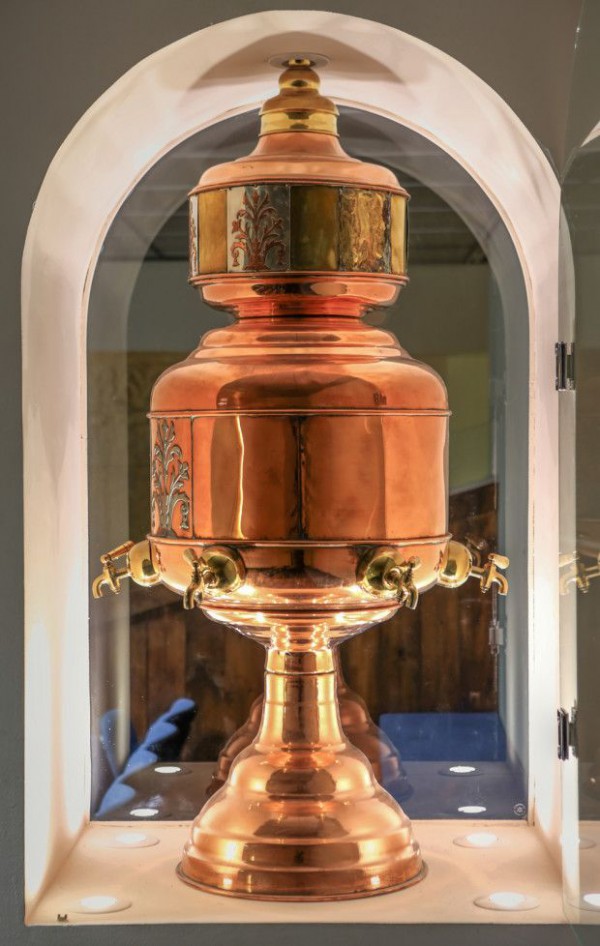
This copper laver was made by the Temple Institute and is ready for use in a future Third Temple courtyard.
STEP 2: The Laver of Purification
After sprinkling the blood of atonement around the altar and before entering the Tabernacle, the priests stopped at a copper laver (keeyor) of living water (water taken from local springs) to cleanse themselves.
After we accept the sacrifice that Yeshua made for us, His Living Water — His Spirit — flows out of us.
“He who believes in Me, as the Scripture said, ‘From his innermost being will flow rivers of living water [meaning, His Spirit].'” (John 7:38–39)
With God’s Living Spirit in us, we are sanctified for Him, and we become priests of His royal kingdom (1 Peter 2:9). As priests, we are able to offer prayers directly to God.
Our next step in the restoration process, then, is to restore personal communication with our Creator.
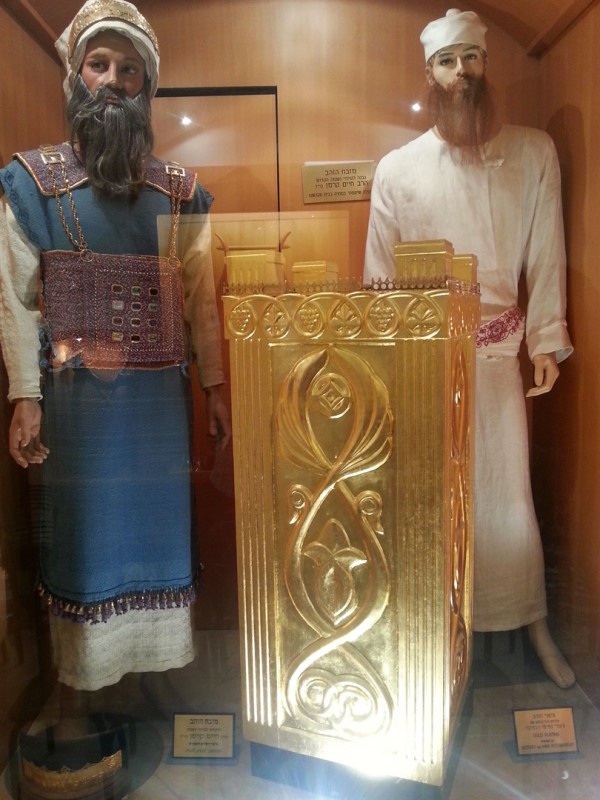
This incense altar, which is made of wood and overlaid with pure gold, was built by the Temple Institute for use in a future Third Temple.
STEP 3: The Golden Altar of Incense
The altar of incense (mizbah quetoreth) stood just inside the entrance to the Tabernacle in the area called the Holy Place, where only priests were allowed.
Twice a day, a priest would take coals from the sacrificial altar to light sweet incense on the golden altar of incense.
Why did God ask for incense on such an expensive altar?
More than a pleasing aroma, it represents how much He wants to hear from us. The Jewish Apostle John saw this truth in His end-time vision:
“Another angel came and stood at the altar, holding a golden censer; and much incense was given to him, so that he might add it to the prayers of all the saints on the golden altar which was before the throne.” (Revelation 8:3; King David also relates incense to his prayers in Psalm 141:2)
Your prayers are not a burden to God, as some think.
They are a privilege of accepting Yeshua’s sacrifice, of being cleansed by His Spirit, accepted into His royal priesthood, and becoming a people for His own possession (1 Peter 2:9).
God wants to hear from you.
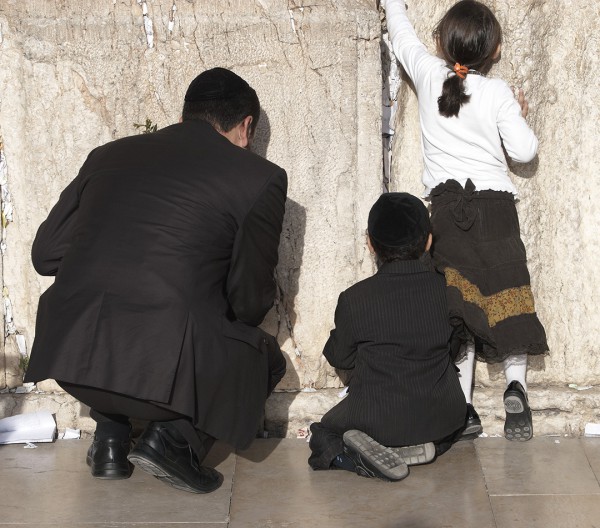
Orthodox Jewish girl inserts a prayer note in the crevice of the Western (Wailing) Wall as her Father and brother pray.
The Menorah
In the Holy Place of the Tabernacle, the seven lights of the beautiful golden lampstand (menorah in Hebrew) were to be an Eternal Light (Ner Tamid), never to be extinguished. Good thing, too, since there were no windows that allowed other light into the Tabernacle.
The ancient Jewish sages refer to the Menorah, Temple, and God’s Word as the Light of the World.
The Light of the World — the fullness of God’s brilliant Shekinah Glory — filled Yeshua, the Word made flesh, just as God’s glory filled the Holy of Holies.
Messiah Yeshua dwelt among the Jewish People, trying to share His glorious Eternal Light with them:
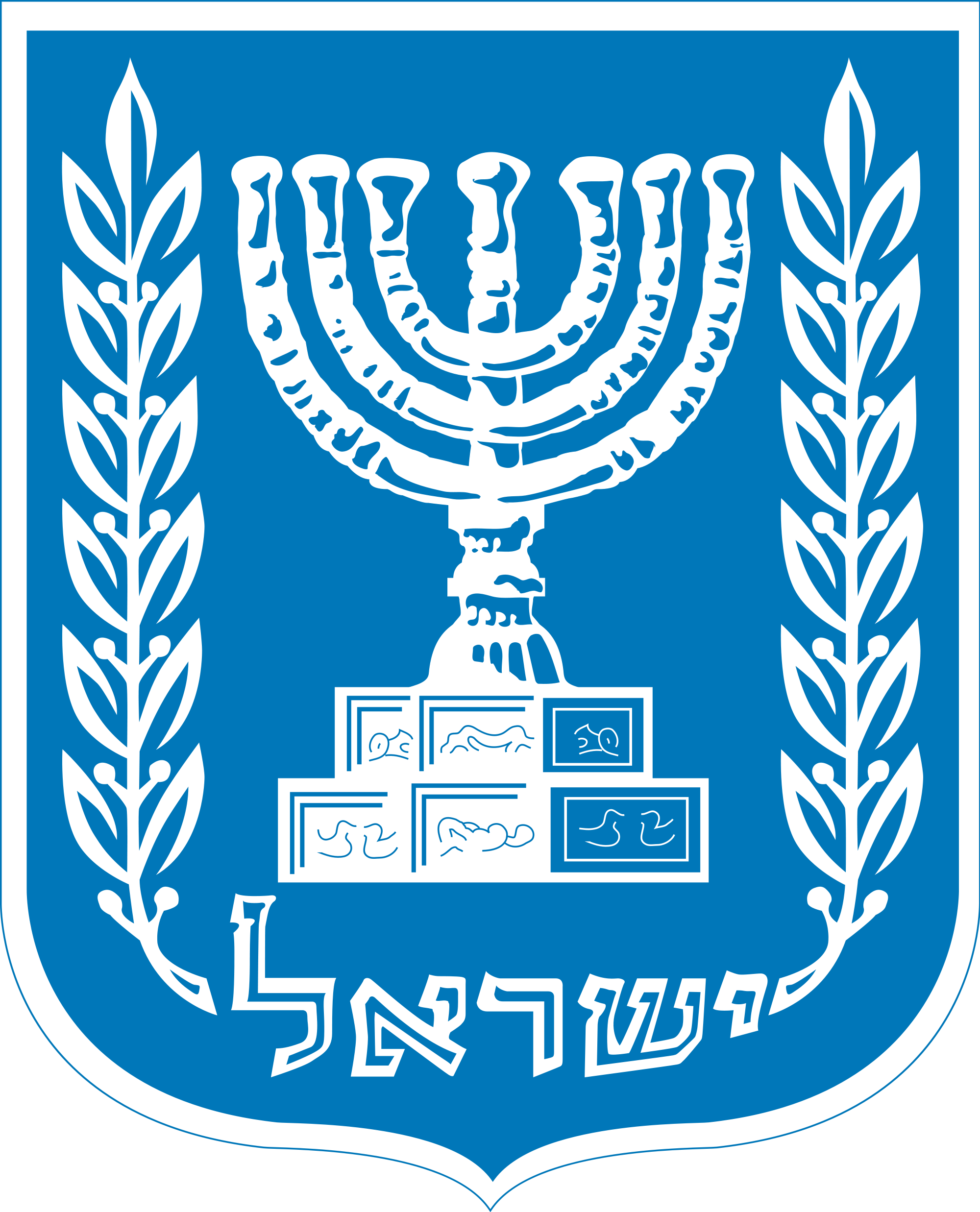
The official emblem of Israel is the seven-branched lampstand with an olive branch on each side. The Hebrew letters at the bottom spell Yisrael.
“Believe in the light while you have the light, so that you may become children of light,” He said. “I have come into the world as a light, so that no one who believes in Me should stay in darkness.” (John 12:36, 46)
Sadly, about 99% of the Jewish People today are still walking in the darkness of secularism, false religions, or the Judaism of today which is paved with the tradition of man and legalism; they need the Light of Yeshua in their lives!
Nevertheless, the Menorah is the everlasting sign of Judaism and the official emblem of the Land of Israel today.
For God said it would be a “perpetual statute throughout their generations for the sons of Israel.” (Exodus 27:21)
The Veil (Curtain)
Near the Menorah hung the veil or curtain (parokhet) that separated the priests in the Holy Place from the actual Presence of God in the Holy of Holies. (Exodus 26:33)
This was no skimpy piece of net that might cover our windows at home!
This was an elaborate 30-foot long curtain, beautifully designed with blue, purple and scarlet “fine woven linen, made by a weaver.” (Exodus 26:36)
This veil continually reminded the people that their sins separated them from God and that He was too holy to approach on their own.
As a visual aid of sorts, two cherubim adorned the veil, reminiscent of the cherubim who kept Adam and Eve out of the Garden, after they sinned (Genesis 3:24).
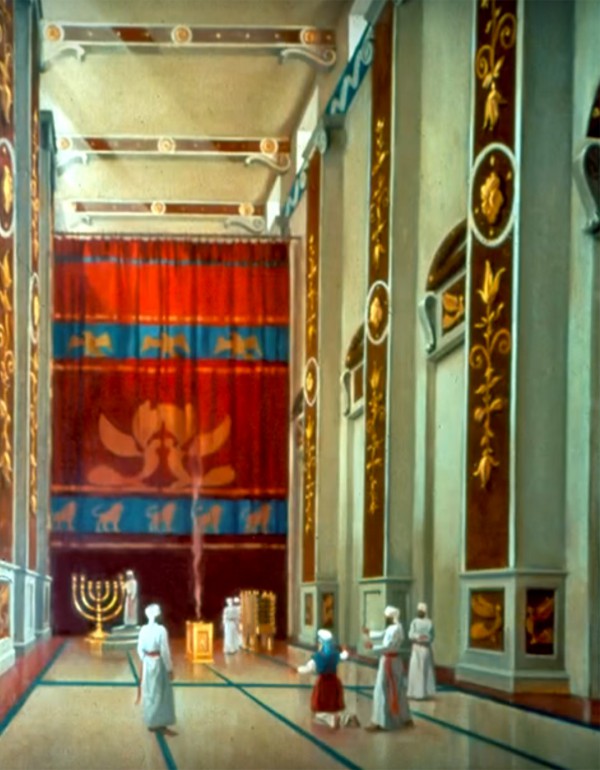
3D rendition of the 30-foot veil with two cherubim that separates the Holy of Holies from the priests. (Temple Institute YouTube capture)
The curtain of the earthly Temple was miraculously torn in two the very moment that Yeshua died:
“And when Yeshua had cried out again in a loud voice, He gave up His spirit. At that moment the curtain of the temple was torn in two from top to bottom.” (Matthew 27:50–51)
What happened on the earth simultaneously happened in the heavenly realm, where a brand new reality opened up for those who trust in Yeshua:
“We have confidence to enter the Holy of Holies, [where God’s Presence rested in the Temple] by the blood of Yeshua, by a new and living way opened for us through the curtain, that is, His body.” (Hebrews 10:19–20)
With the tearing of the veil upon the sacrifice of Yeshua, we now have access to the Holy of Holies!
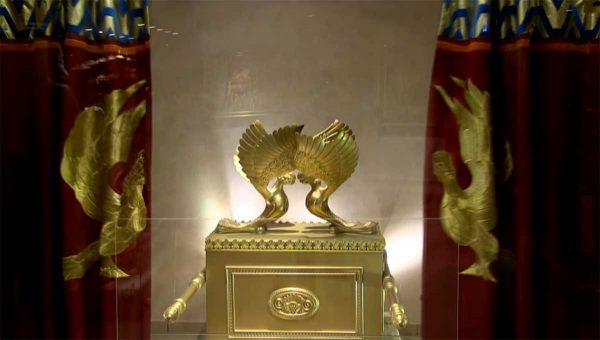
The Temple Institute in Jerusalem has produced this Ark of the Covenant, according to scriptural guidelines, for use in the Holy of Holies of a future Third Temple. (Temple Institute YouTube capture)
STEP 4: The Holy of Holies
Before Yeshua became our atonement, only the High Priest (Kohen Gadol) could enter the Holy of Holies (Kodosh haKodeshim), and only with blood, and only once a year on Yom Kippur (Day of Atonement).
On that day, he made atonement (asked God’s forgiveness) for himself and all the people of Israel (Leviticus 16:14–15; Hebrews 9:7).
As our perfectly holy High Priest, Yeshua took His own blood into the actual Presence of God, the Holy of Holies in Heaven!
“For Messiah did not enter a holy place made with hands, a mere copy of the true one, but into heaven itself, now to appear in the presence of God for us.” (Hebrews 9:24)
God accepted the sacrifice of Yeshua for us.
No one has to stand in the courtyard, relying on an earthly High Priest to enter God’s presence behind the veil on our behalf.
It’s no coincidence, then, that the Temple was destroyed in AD 70, a generation after Yeshua’s atonement and final sacrifice.
He has become our High Priest, and we have access to the Father through Him alone (Hebrews 6:20, 8:1).
In Yeshua’s name, we pray. In Yeshua’s name, we heal. In Yeshua’s name, we immerse (baptize) Believers in water to proclaim their new faith.
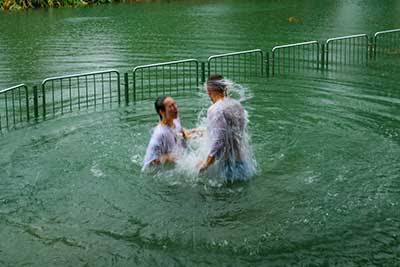
A pilgrim is immersed in the Jordan River according to the teachings of the apostles, such as Peter who said that new Believers are to “be immersed [submerged] in the name of Yeshua HaMashiach (Jesus the Messiah).” (Acts10:48)
If you accept the sacrifice of Yeshua, are forgiven by His blood and cleansed with His Living Water, then you have crossed into the Holy of Holies of the Tabernacle where only priests were allowed to enter.
You are now a walking Tabernacle, a true disciple of Messiah Yeshua, who carries God’s Presence within Him, and He in you.
“Your body is a temple of the Holy Spirit who is in you, whom you have from God.” (1 Corinthians 6:19)
One day, in the New Jerusalem, it seems that we will be able to walk and talk with our Creator “in the cool of the day,” just as He did with His Adam and Eve in the Garden.
The Apostle John explained it this way:
“I saw no temple in it, for the Lord God the Almighty and the Lamb are its temple. And the city has no need of the sun or of the moon to shine on it, for the glory of God has illumined it, and its lamp [Menorah] is the Lamb [Yeshua].” (Revelation 21:22-23)
Perfection, purity, and holy fellowship with our Creator, as it was in the beginning, will be restored forever. Halleluyah!




